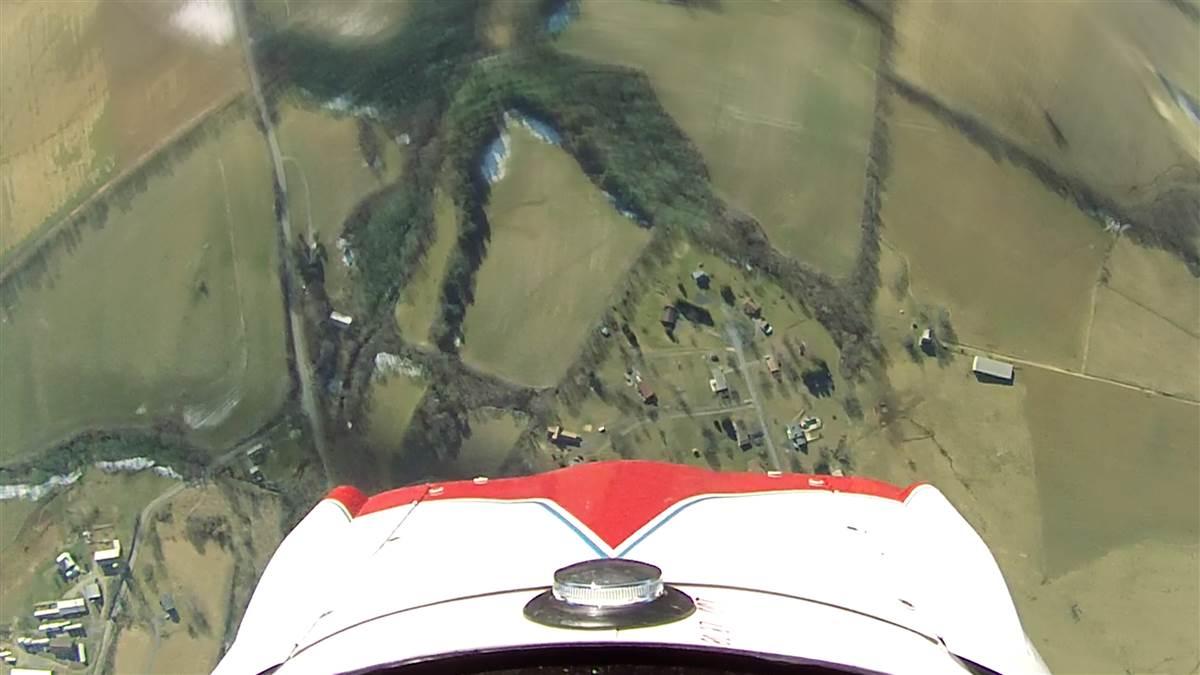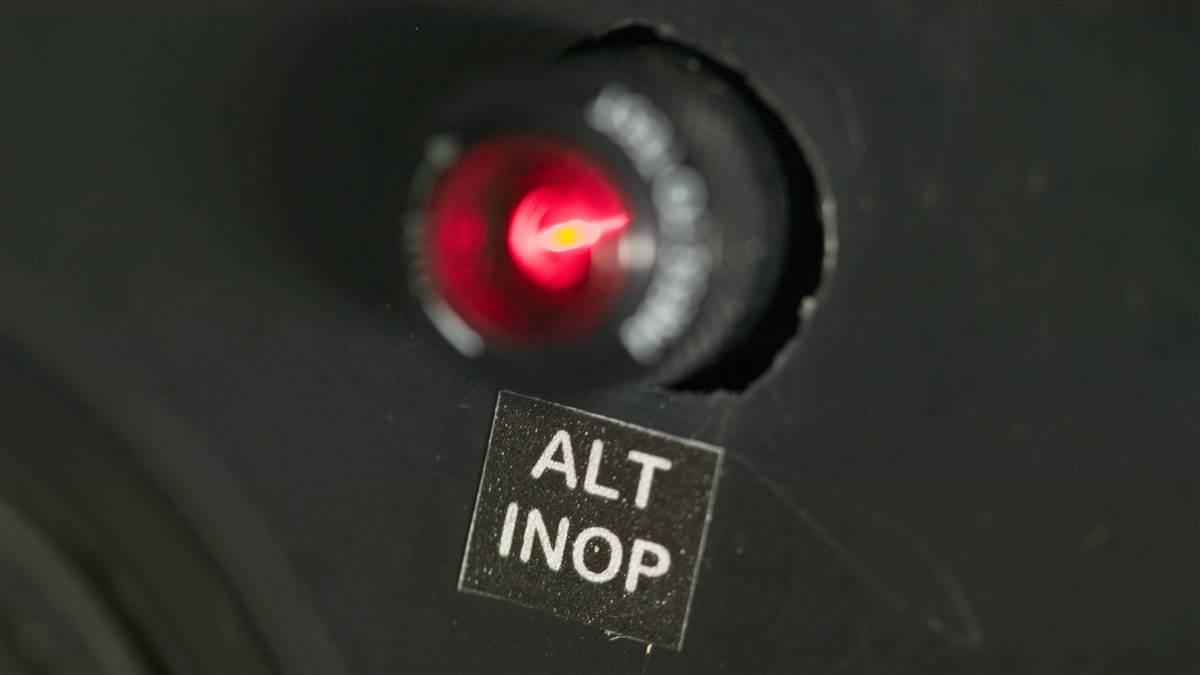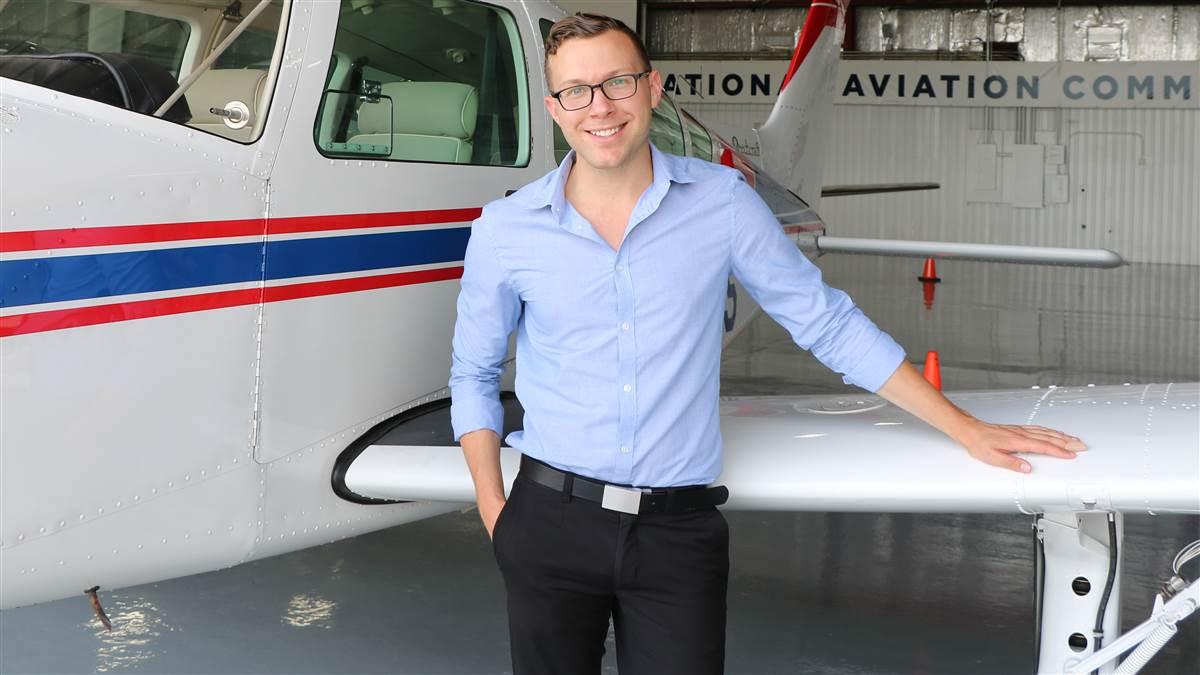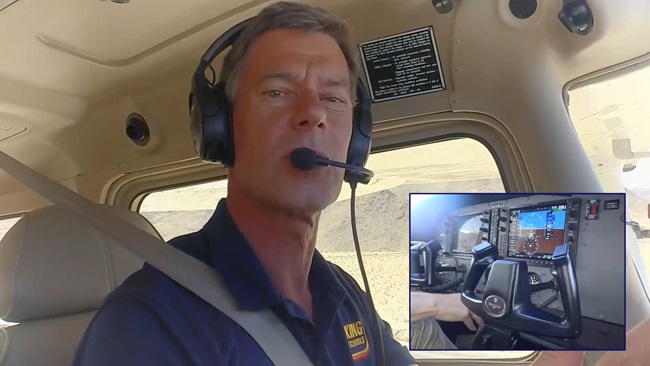
Making connections
AOPA social media network brings pilots together
On Instagram or Facebook, the AOPA Hangar or Twitter, and video programming such as AOPA Live This Week, Behind the Logbook, and FlyBy, AOPA offers myriad ways for like-minded aviation enthusiasts to share their passion.
A stunning aviation photograph gets you daydreaming about flying. Pilots ogle AOPA’s Super Cub Sweepstakes aircraft and boast about what they’ll do when they win. Familiar faces in aviation explain the latest threat to general aviation—and what you can do to help. Social media provides a platform for AOPA to inspire, connect with, inform, and engage members and aviation enthusiasts.
“Not only do we promote important advocacy efforts and AOPA membership perks, we want to connect with and promote pilots who are active on social media and advocating for GA in their own ways,” says John Munn, AOPA social media community manager. GA is made up of different people, each with his or her own story; AOPA wants to give those stories a platform.
Social media is increasingly important to organizations such as AOPA. “We’ve increased our social media following by 80,000 overall the past year,” says Munn. “For instance, our coverage of scholarship opportunities brought an increase in applications from young aviators who are present on social media. We’re able to give a live look at our fly-ins, airshows, and Mark Baker’s Pilot Town Hall meetings by livestreaming to an audience of 160,000 followers. With the help of social media coverage of BasicMed resources, 13,219 people have completed their FAA medical course and are on their way back to the skies.”
By the numbers
Facebook: AOPA’s most-engaged social channel. We have more than 163,000 likes, adding an average of 500 more each week, and we have received a 4.6-star rating.
www.facebook.com/AOPApilots
Instagram: AOPA created its Instagram account in 2015. It’s a great place to view cool aircraft photos and other inspiration from our members. We have 37,000 followers.
www.instagram.com/flywithaopa
Twitter: With more than 58,000 followers, join AOPA in information exchange at 140 characters or fewer. Many of our staff members also have individual Twitter accounts.
https://twitter.com/aopa
AOPA Hangar: Launched in spring 2017, “the place to gather to talk about all things aviation” has thousands of members in a number of groups such as CFIs, Cessna owners, aviation lawyers, and more.
www.aopahangar.com
AOPA Live This Week: Our weekly web-based news program brings AOPA Senior Vice President Tom Haines and Vice President Melissa Ruddinger into your home with the latest GA news and stories.
www.aopa.org/thisweek
FlyBy: AOPA’s engaging video producer Paul Harrop takes his unique look at the world of general aviation in this periodic web-based show on the YouTube channel. There are 28 episodes and counting.
www.aopa.org/flyby
Behind the Logbook: Follow along with two new students on their flight training journey. Brittany and Emily are AOPA staffers who are just
learning to fly.
www.aopa.org/btl
AOPA Finance
Don’t let paperwork delay your purchase
Buying and selling an aircraft can be a lengthy process, but if you do your research and start early, you can avoid some of the common mistakes that often hold up the process.
1. Last-minute ideas. One of the biggest delays comes from buyers who, at the last minute, decide their airplane could benefit their business and provide tax benefits if it is owned as a limited liability company. Discuss the idea with a tax adviser who understands the nuances and tax benefits of aircraft ownership before you execute a purchase agreement. If you decide to change who the aircraft owner will be, the loan documentation—30-plus pages requiring 15-plus signatures—must be changed to reflect the new owner.
2. Title issues. Sometime there is a lien on an airplane that was never properly cleared—perhaps the wrong person signed to remove the lien. Now the deal is on hold while the seller hires a title company or attorney to clear up past issues. Check early to make sure there are no liens on the aircraft by ordering a title search.
3. Prebuy inspection. What can go wrong with a prebuy inspection? It can be as simple as parts availability. What if you wait until late in the deal to do the inspection, and finds parts are needed to comply with an airworthiness directive? And what if those parts must come from a factory overseas? Suddenly the deal is on hold. Hold off on scheduling your closing until you know the results of the prebuy inspection.
4. Paperwork. Begin sending in the required documents as soon as you have them. That way the documents can be checked as they are received, and problems may be dealt with immediately. All loan documents must be received by the lender, and reviewed prior to closing.
AOPA Aviation Finance will walk you through each step of the process of financing or refinancing. Call 800-62-PLANE (7-5263) or visit aopafinance.com.
AOPA Insurance
Student or renter?
Make sure you're covered
When you’re a student or renter, you may jump into the left seat expecting that you and the aircraft are covered by insurance in the event of an accident. Are you sure about that? Here are some important items you want to go over with your local FBO the next time you fly:
1. Ask to see your FBO’s certificate of insurance. It should include the following information:
- All aircraft the FBO offers for rental are insured.
- Aircraft liability limit.
- Aircraft hull coverage and deductibles.
- Student and renter liability (if the FBO provides, optional coverage).
2. Review your rental agreement to understand your obligations to pay for any damage.
3. Review your nonowned aircraft policy to understand what it does and doesn’t cover regarding your rental agreement obligations.
Student and renter liability offered by your FBO does not cover you the way personal nonowned aircraft insurance will. The FBO’s coverage has a limit, and it will apply the coverage to its liability first; if there is any left, that liability may extend to you. In other words, the owner of the aircraft could expect you to cover the balance. Don’t be afraid to ask your FBO for its certificates.
The specialists at AOPA Insurance Services can walk you through what you need to protect yourself as a student or renter and find the policy that works best for you. We’ll help you review your FBO’s coverage, rental agreement, and personal insurance policy. Go online (aopainsurance.org/
renters) or call 800-622-AOPA (2672).
Where stalls really happen
ASI’s new study may surprise you
By Machteld Smith
While aerobatic training can help with unusual attitude recovery, it is unlikely that it will help pilots recover from an inadvertent spin in the traffic pattern. It’s therefore good to understand the causes and consequences of stalls.
The new AOPA Air Safety Institute Stall and Spin Accidents: Keep the Wings Flying study explores accidents in GA aircraft that occurred in a 15-year period ending in 2014. The report’s analysis finds more stalls occurring on takeoff and climbout than during approach and landing. That’s an important fact, because those stalls are also the deadliest, resulting in fatalities about half the time.
 One catch in stall training is that it is practiced in a controlled, coordinated scenario at a high altitude. By design, the training teaches pilots how to stall the aircraft—most often wings level—and then recover by reducing pitch (and adding power as needed). But when not deliberate, such as in an unexpected power-on stall during takeoff or a go-around, it will be a sudden, sharp, and frightening event. Under those circumstances, at a low altitude, even a brief loss of aircraft control may be unrecoverable. So ASI’s study recommends improvements in stall-recognition training. For example, it suggests a more realistic scenario that emphasizes how quickly angle of attack increases with added bank and G forces and that raises awareness of the dangers of distraction.
One catch in stall training is that it is practiced in a controlled, coordinated scenario at a high altitude. By design, the training teaches pilots how to stall the aircraft—most often wings level—and then recover by reducing pitch (and adding power as needed). But when not deliberate, such as in an unexpected power-on stall during takeoff or a go-around, it will be a sudden, sharp, and frightening event. Under those circumstances, at a low altitude, even a brief loss of aircraft control may be unrecoverable. So ASI’s study recommends improvements in stall-recognition training. For example, it suggests a more realistic scenario that emphasizes how quickly angle of attack increases with added bank and G forces and that raises awareness of the dangers of distraction.
Read the report and watch ASI’s Margins of Safety: Avoiding Power-On Stalls video, which shows how vastly different training and real-world scenarios can be. Consider sharing these tools with your flight instructor during the flight review.
Machteld Smith is an aviation technical writer for the AOPA Air Safety Institute.
New from ASI
Just like a mentor: Advice when you need it
Do you sometimes wish you could snap your fingers to summon a personal safety mentor during flight planning? ASI’s safety advisors and briefs can help. Several advisors were recently updated and converted from a portable document format to one optimized for mobile devices. These advisors also embed multimedia and offer links to delve deeper into the subject matter. Current mobile advisors cover maneuvering flight, collision avoidance, emergency procedures, decision making, fuel awareness, fighting fatigue, and volunteer pilots. Certain new advisors also incorporate former safety briefs (e.g., terrain avoidance, electrical fires, and misfueling). ASI plans to convert all advisors to the mobile platform.
VFR into IMC confessions
On occasion, pilots get caught under lowering ceilings and in deteriorating visibility. Such encounters can be outright scary. ASI’s VFR into IMC: The Experience features experienced pilots who talk about the rationale that drove them to conduct such flights. The video is excerpted from ASI’s Weather Wise: VFR into IMC course, which hones pilot decision-making skills to avoid continued VFR flight into deteriorating weather.
New fall seminar: Fly By Night
Find the key to flying safely after sundown. Attend the AOPA Air Safety Institute’s fall seminar and compare notes with the presenter and other pilots. Visit the website for dates and locations near you.
Legally speaking
Clock’s ticking
Inoperative equipment shouldn’t stay inoperative indefinitely
By Chad Mayer
 The FAA’s Office of the Chief Counsel recently issued the De Joseph legal interpretation, which makes clear that aircraft operated under Part 91 cannot be operated indefinitely “with inoperative equipment installed.” The inquiry centers on whether FAR 91.213(d)(2) was a standalone paragraph or whether it must be read in context. The interpretation states that it must be read in context, meaning that the owner or operator must have the item repaired, replaced, removed, or inspected at the next required inspection. It also means that operations with discrepancies under FAR 91.213(d)(2) are only available for the aircraft described in FAR 91.213(d)(1)—generally, light nonturbine aircraft in several listed classes.
The FAA’s Office of the Chief Counsel recently issued the De Joseph legal interpretation, which makes clear that aircraft operated under Part 91 cannot be operated indefinitely “with inoperative equipment installed.” The inquiry centers on whether FAR 91.213(d)(2) was a standalone paragraph or whether it must be read in context. The interpretation states that it must be read in context, meaning that the owner or operator must have the item repaired, replaced, removed, or inspected at the next required inspection. It also means that operations with discrepancies under FAR 91.213(d)(2) are only available for the aircraft described in FAR 91.213(d)(1)—generally, light nonturbine aircraft in several listed classes.
Additionally, the interpretation clarifies the requirement of FAR 91.405(c)—that equipment permitted to be inoperative under FAR 91.213(d)(2) must be addressed at the next required inspection—is a limited exception to FAR 91.405(a). FAR 91.405(a) requires discrepancies to be repaired between inspections unless FAR 91.405(c) permits operations with the inoperative equipment to continue until the equipment is addressed at the next required inspection, but not indefinitely.
Most of us who have rented aircraft have seen instruments or pieces of equipment placarded “INOP.” You must confirm that the item in question is not required by any of several documents and regulations before concluding that the aircraft can be legally flown without it being operational. Of course, the pilot (or a mechanic) must also conclude that the aircraft can be safely flown without it.
If the aircraft has a minimum equipment list, then that controls. If not, the following must be consulted to see if it is required for the item in question to be functional: type certificate data sheet per FAR 91.213(d)(2)(i); manufacturer’s kinds of operations equipment list per FAR 91.213(d)(2)(ii); FAR 91.205 or any other Part 91 regulation “for the specific kind of flight operation being conducted” per FAR 91.213(d)(2)(iii); and airworthiness directives per FAR 91.213(d)(2)(iv).
If not required by any of the above, then the item may be either deactivated and placarded inoperative or removed. It is important to note that the removal would have to performed and logged pursuant to Part 43, as would the deactivation if it involves maintenance. If the aircraft is not airworthy with the instrument or equipment inoperative, then either it would need to be repaired where it is or, prior to flying the aircraft to a repair station, you’ll need a special flight permit, commonly known as a ferry permit.
Chad Mayer is an in-house attorney with AOPA’s Legal Services Plan.
 John Munn is the manager of AOPA’s social media efforts. He was inspired by his grandfather, an Air Force mechanic and dedicated Sun ’n Fun volunteer, and wanted to become a pilot since he was a kid. Although there were no pilots in his family, his grandparents kept him inspired by taking him on seaplane rides every summer in the Adirondacks. After college, Munn began flight training in a Cessna Skyhawk, earning his private pilot certificate in 2015. Munn has recently obtained his instrument rating and commercial certificate. Munn’s professional experience has taken him through industries as diverse as aerospace and hospitality.
John Munn is the manager of AOPA’s social media efforts. He was inspired by his grandfather, an Air Force mechanic and dedicated Sun ’n Fun volunteer, and wanted to become a pilot since he was a kid. Although there were no pilots in his family, his grandparents kept him inspired by taking him on seaplane rides every summer in the Adirondacks. After college, Munn began flight training in a Cessna Skyhawk, earning his private pilot certificate in 2015. Munn has recently obtained his instrument rating and commercial certificate. Munn’s professional experience has taken him through industries as diverse as aerospace and hospitality. 

